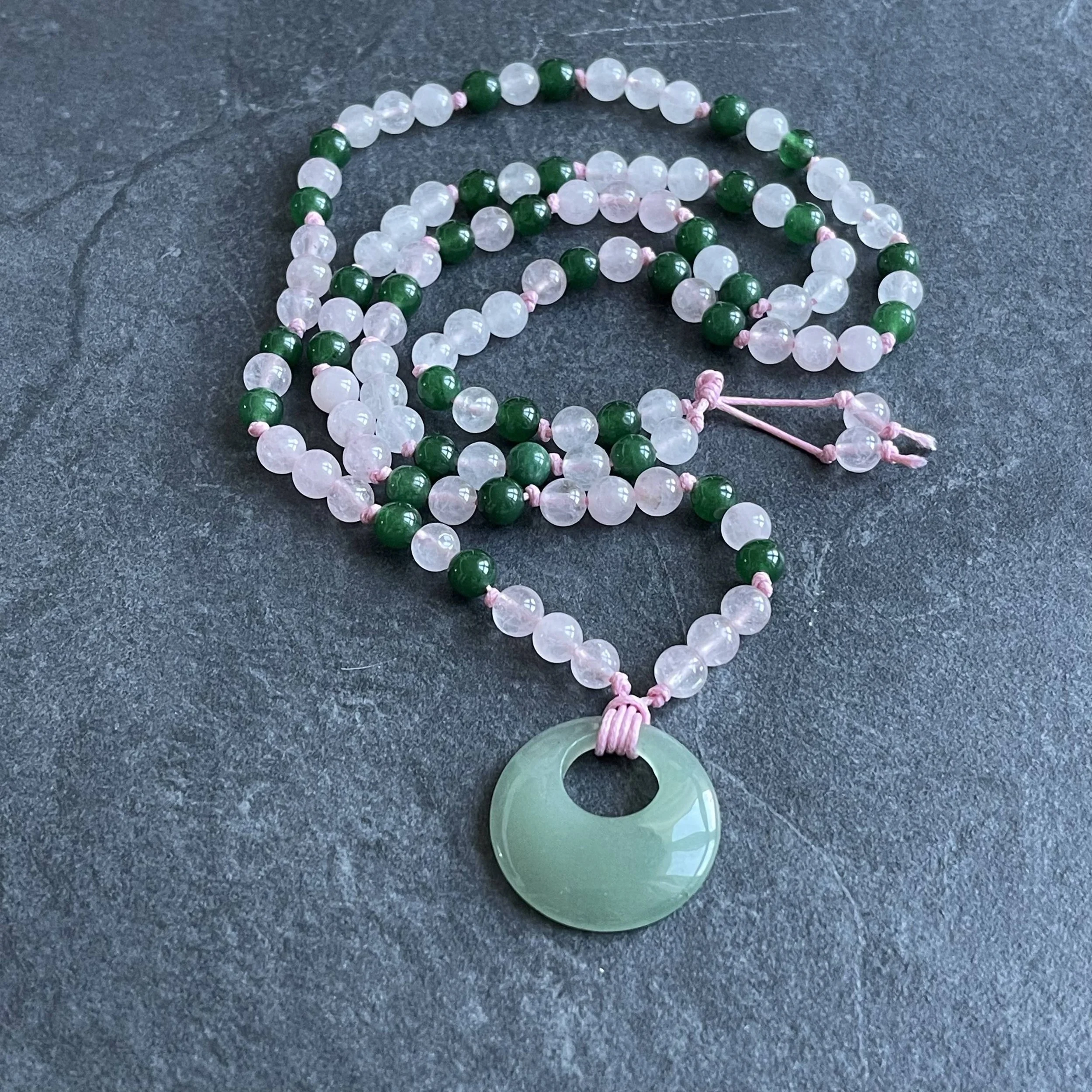Mala necklaces
An Introduction to Malas
These extra-long beaded accessories are correctly associated with yogi-surfer style, mindful spirituality and peaceful beaches.
But what do they actually mean and why do they have 108 beads?
Many of today’s religions also use beaded necklaces (mala, rosary, subha) to help meditate and recite prayers. The English word bead even comes from the Anglo-Saxon words bede and bidden which mean “prayer" and “to pray.”
Meditation and Mala
Mala beads have been used by yogis and spiritual seekers to help keep their minds focused during meditation.
The term ‘mala’ is a Sanskrit word for “meditation garland.” Originally, mala beads were used for a special style of meditation called Japa, which means “to recite.”
Meditation is meant to connect you to your deeper inner self and it’s great for stress reduction. Regular meditation also helps you manage your emotions and attention span.
Malas are traditionally held in the right hand, with the mala draped over the middle finger. The counter bead next to the guru bead/tessel represents the start of the meditation practice. Each counter bead is held between the thumb and middle finger. The thumb pulls the next counter bead over the middle finger after each repetition. The index finger does not touch the mala as it represents one’s ego (believed to be the greatest obstacle in attaining enlightenment). Once the last counter bead is reached, one can either end the meditation or continue on by turning around and going the other direction.
During meditation you repeat a mantra 108 times using your mala beads to keep track. A mantra is a word or sound repeated during mediation to help you concentrate.
108 beads
There are always 108 beads on malas. The number is often described as the numerical equivalent of “Om,” one of the most important spiritual sounds in meditation.
The mala’s beads that can be made of seeds, sandalwood, rosewood or gemstones.
The 109th stone or the guru stone symbolises gratitude and our connection to the divine. It is a way to say thank-you to all the spiritual teachers who have helped us on our path to enlightenment.
So why 108 repetitions? This is a question with hundreds of answers. The number 108 has seemingly limitless meanings across various philosophical, scientific and religious beliefs. Some of the most interesting are:
Sun and Earth: The diameter of the sun is about108 times the diameter of the Earth. The distance from the sun to the Earth is 108 times the diameter of the Sun.
Moon and Earth: The average distance from the Earth to the Moon is 108 times the diameter of the moon.
Powers of 1, 2, and 3: In math, 1 to the 1st power equals 1, and 2 to the 2nd power (or 2 x 2) equals 4, and 3 to the 3rd power (3 x 3 x 3) equals 27. Therefore, 1 x 4 x 27 = 108.
Harshad number: 108 is a Harshad number, which is an integer divisible by the sum of its digits (Harshad is from Sanskrit and means "great joy").
Religion or fashion?
It’s good to note that you don’t have to be religious to wear or use a mala. It is important, though, to understand its use and respect its significance.
Mala beads can be stunning pieces of jewellery, usually in the form of necklaces and bracelets, but their meaning and usage has developed and adapted over time. More recently they have become almost a fashion accessory, with many people wearing them who do not follow the Buddhist faith.
Buying a Mala necklace remains a personal thing. Malas can be anything the wearer/owner wants it to be.







